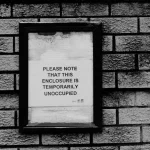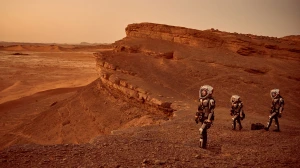One of the biggest dreams of humanity, space colonization, specifically of Mars, could be reality soon. Well, maybe not really, but it’s years now that scientists are finding answers to overcome those obstacles, starting from lack of water and oxygen, that seemed to make life on the “red planet” a pure utopia. According optimistic predictions, everything will be technically possibile in 20 years. Not that much!
Human nature is explorative, no doubt. During millenniums, many pioneers risked their lives or died to reach every spot of the Earth. At the same time it was tried to solve the mysteries of the universe. There’se not much unknown left on our planet, except for the abyss of the oceans. Curiosity and scientific progress made the space race start. At the beginning in the frame of the Cold war, movies such as Star Wars are more political than what they look like. In the meantime there was Ronald Reagan project of the space shield, as a defens from the Soviets.
But of course there are also the unselfish look of dreamers who gaze above and fantasize on parallel worlds or the catastrophic one – popular more than ever with all the enviroment issue – who is looking for a way out from our doomed planet. Mars could be the best option. The Moon is too small for 7 billions people, Kepler, Trappist and all the “new” planets like Earth discovered recently are just too far. No living being has (yet) a longevity to face a trip of hundreds of years.
Movies and tv series like The Martian and Mars – a mix of real interviews and fiction – took that seriously, wondering how inhospitality could be fixed. First, the travel. The absence of gravity and the return to it cause pain to the spinal cord, which would stretch and then shrink. So, immediate need for physiotherapy. Of course you couldn’t go out to patrol, without suits. The almost total absance of atmosphere brings the temperature down to -150°C and exposes to carcinogenic magnetic radiations.

Second: how to breath. Necessarily, there will have to be plants and organisms able to produce oxygen. Plantations would be possible only after eliminating toxic elements of martian ground. Water is considered a minor problem. In some areas was found some ice, maybe a proof that there was some forms of life.
Another technical aspect is the distance from Earth. Communications would slow down of 20 minutes from the immediacy we’re used to. Plus, each segment would last six months. Better check everything before leaving. And we can’t underestimate the psychological effects. Nobody could go on Mars without a specific training, because life would be the shadow of the usual one (that sometimes isn’t exciting as well).
How much can we resist without going outside? And to do what, on Mars? At the beginning there won’t be theatres, shops, bars, discos, stadiums. You should stay put in the station, 24/7 with the same people, never changing scenary. No sea, mountain, city, lake, country, forest. Without a proper preparation, how many would try to kill everyone, like Jack Nicholson/Jack Torrance in Shining? Different expertise will be required? Or just engineers and gardners (and few others)?

Will we be able to superate terrestrial mentality? For instance, we’re used to a certain kind of administration, from local to national to supranational organizations (Onu, Nato, Eu, Nafta ecc). Will be recreating borders and walls or will be start fresh, a new community life based on solidarity and support by each other, far from ethnical and religious differences? Will be everyone allowed or only people who can afford astronomic expenses will leave?
We don’t have answers yet, also because this don’t look so imminent. But something is sure. Just thinking about all the unnecessary structures we build in our minds makes the idea of exploring Mars or the space less appealing. We shouldn’t lose the authenticity of the first humans who started asking questions on the infinite while staring at the sky, otherwise extinction would be a better option. The one chosen by 90% of the species who ever lived out here.


































